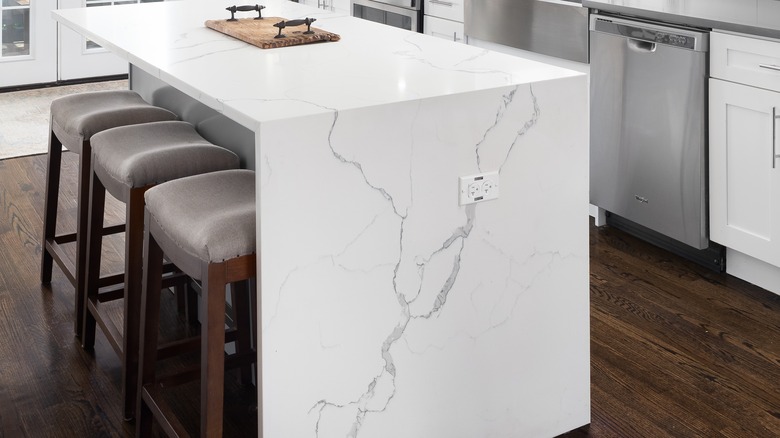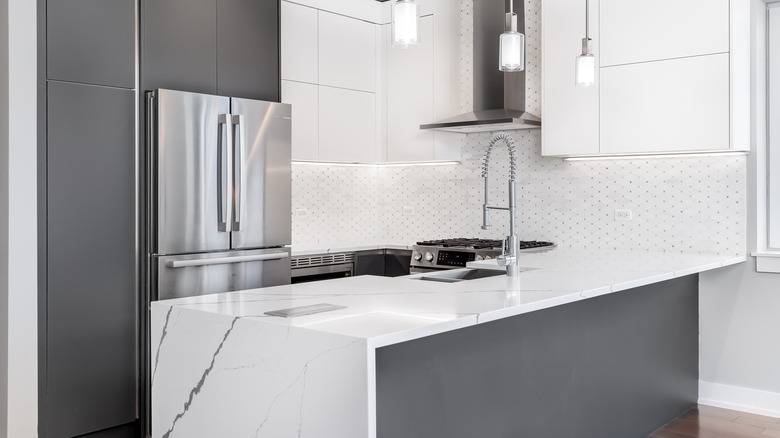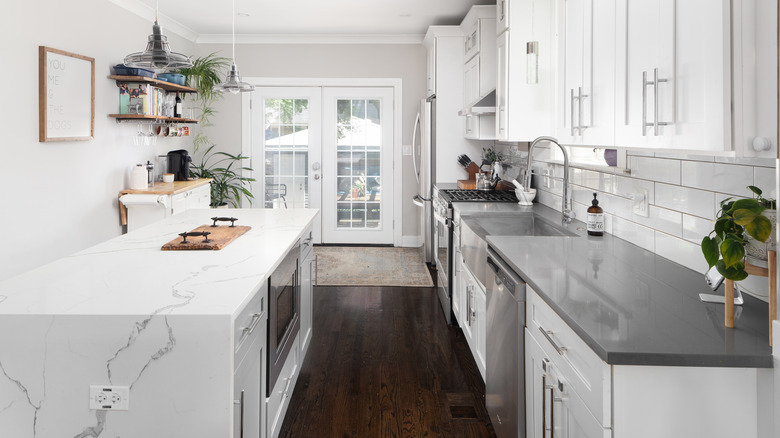Are Waterfall Countertops Just A Fad Or A Timeless Design Feature?
While scrolling through kitchen design inspiration, you may notice some counters that continue all the way down to the floor. These are known as waterfall counters, resembling the look of water flowing over a cliff. While these features are a component of modern and luxury design, the style originated during the art deco era of the 1930s and '40s, according to Precision Countertops. Along with glamor and luxury, art deco was known for its geometric and streamlined aesthetics; all details that a waterfall counter embodies.
Since this kitchen feature has lasted through the decades, there's a strong argument to be made that it has earned its way into being considered a timeless design. Of course, trends can be tricky to nail down since the cycles are always moving and popularity continually ebbs and flows, but in the case of luxe kitchens with gorgeous waterfall countertops, there seems to be a fairly clear consensus.
Waterfall countertops are not going anywhere just yet
Interior designers and design experts are not calling for the end of waterfall countertops just yet. The clean lines still feel very modern even if the style has been around for decades, notes Precision Countertops. Simple, straight lines look timeless because there's no ornamentation to date the detailing. When the waterfall countertop forms a clean corner and a straight edge all the way down, the feature instantly elevates a kitchen to become more luxurious.
However, what can date a waterfall countertop is the material used to create it. Graphic slabs of marble with bold swirls and veining, as well as unique colors like green, black, and pink, are all having a moment, says Eye Swoon, but that doesn't mean more minimalist cuts of stone won't be the leading trend in the years or decades to come. These bolder swirls are also harder to match at the corners where the top and side slabs meet, which can prevent a seamless look. Quartz countertops have more uniform veining, which is easier to match for a waterfall edge.
Waterfall edges are an investment
When designing a kitchen, budget is often a top concern. If you're going to be investing in a feature detail, you want it to be in style for as long as possible. Waterfall countertops will always cost more because of the extra slab and expert installation needed to pull off the look. The slabs can cost between $40 and $100 or even more per square foot, according to Caesar Stone. Yet an even more expensive cost comes from the fabrication process. Fabricated slabs are cut to size to perfectly fit the height and width of your kitchen cabinets. This process can cost $2,000 on top of the cost of materials and installation labor. It's the fabrication, though, that makes waterfall edges a luxury detail.
You won't be paying all of this money only for style; waterfall counters can also act as practical protection for your cabinets. Durable materials like stone and quartz will stand up to scratches and stains, often better than wood cabinetry. Adding an overhang may also provide a space for a casual eat-in kitchen and offer a hiding place for small appliances like wine fridges, microwaves, or dishwashers. In the end, the investment will be as much functional as it is aesthetic.


